Kate Rauner's Blog, page 91
December 3, 2014
False Summit – a poem by Kate Rauner
The valley’s in darkness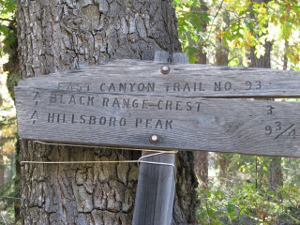
Where lingering mist
Follows the river
Through each shaded twist.
The chill at a sunrise
In damp morning air
Just raises excitement
In each prickling hair.
The mountain above me
Is pink in the dawn
And it will be mine
Before day is gone.
A path through the trees
Is clear to my eyes,
Feel my muscles
Warm as I climb.
Sharp scent of the trees,
The hum in the air,
Songs from the birds
Follow me where,
Still below tree line,
I set my own rate.
Here comes the hard slog,
I make my own fate.
A pack’s on my back
But I’m traveling light.
Nothing will slow
My march to the heights.
My throat turns to dust,
So I drink as I move,
Snack from my pockets,
There’s no time to lose.
The path becomes narrow,
The trees become thin.
They lean down the mountain
Away from the wind.
A patch of bright lichen
Enlivens the trail,
Crystals in rock,
A bevy of quail,
The chirp of a pica
A hawk overhead,
They don’t impede,
They drive me instead.
I’ll carry the ache
Till I reach the top,
Place boot before boot,
I never will stop.
Trudging gets harder,
Muscles complain,
Rocks slip underfoot,
Unforgiving terrain.
Breath becomes ragged,
I push through the pain,
Embrace the discomfort,
The sweat and the strain.
Now I approach it,
The peak I discern,
My goal’s within reach,
All that I’ve earned.
A last tired scramble,
A scrape to the knee,
Heave over the ridge
And what do I see?
Mountains on mountains
Reach higher than high,
March to the horizon,
Scraping the sky.
I’m worn and I’m footsore,
But barely begun.
The mountains are endless.
I’ll never be done.
Seen from my poor perch
The outlook is vast.
In long evening shadows
I laugh and I laugh.
Inspired by hiking in the Rockies. And by living life.

November 29, 2014
Take That! Standard Writing Advice
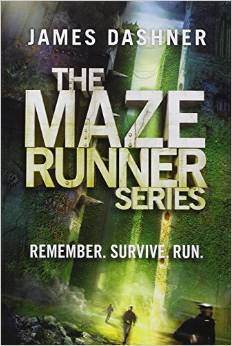 There are lots of writing tips out there. I am reading popular science fiction to help me understand the “rules”.
There are lots of writing tips out there. I am reading popular science fiction to help me understand the “rules”.
The Maze Runner (book one of a series that also includes a prequel) certainly qualifies as popular. It rates 4 1/2 stars out of 5 on Amazon, with 324 reviews for the version I checked, and was recently made into a movie. It’s easy to read and I finished it in a weekend. I feel a bit overdosed on teenagers in dystopian worlds, so I don’t think I’ll read the next book.
The story’s setting is its strongest point – an enormous maze built from unclimbably-tall walls, some of which move at night, inhabited by weird and highly imaginative monsters. (How could movie makers resist these way-cool monsters?) The monsters may wander the maze during the day, but always, murderously, come out at night. Several dozen teenage boys live in the safe, central “Glade” where they raise crops and farm animals. Memories of their previous lives have been “wiped” and a new boy arrives once a month on an underground elevator. A few “runners” map the changing maze each day, seeking a way out. In over two years, they have failed to solve the maze.
The story follows Thomas, the latest arrival.
It seems obvious that author James Dashner intended The Maze Runner to be the first book in a series. Writing advice says “each book in the series must have satisfactory individual story arc resolutions.” It’s hard to discuss the ending without spoilers, but, while there is a major development, there is no solid ending to The Maze Runner – the ending sets up the next book. This criticism pops up in reviews of the movie, too. Thomas and the surviving boys (sort of) learn why the maze was created and why they were imprisoned there. The actions of the Creators of the maze seem counter-productive to their own goals – how did this help them? Baffling. And one of the characters, the only girl to ever arrive at the Glade, seems superfluous, only introduced to be there at the start of the next book.
One review on Amazon says such criticisms are misplaced, that everything is explained in the rest of the series. If you love the book, realizing there are two more books to buy may be a good thing. Personally, I appreciate each book in a series having its own ending.
Here are a few more observations.
Advice: Edit out typos.
Dashner’s book was beautifully edited.
Advice: Show, don’t tell.
Dashner provides a lot of action, so he follows this well. I did notice that the characters often refuse to answer each others questions. A little “telling” among characters would have been okay with me.
Advice: “There’s a concept behind [a series] that ties the books together and gives readers a reason to come back book after book… This concept will be at the heart of every core conflict. It will likely be the thing you say first when describing your series to people, as it will define what the series is about.” Janice Hardy
Dashner: The hook for The Maze Runner is definitely the maze, and it seems unlikely to me that the maze will reappear in the rest of the series. The second book has equally stellar reviews on Amazon, so this doesn’t seem to have been a problem.
Advice: Avoid saidisms – that is, the tags on dialogue should only be “he said” “she said” and, where it’s clear who’s speaking, drop them entirely.
Dashner: He mostly avoids saidisms – for example:
Thomas nodded at him. “A beetle?”
“Cuz you’re the newest Newbie.” Chuck pointed at Thomas and laughed.
But he’s not afraid of saidisms:
“asked” (To me, this one seems impossible to avoid when the dialog’s a question.)
“shouted”
“responded”
“murmured”
“demanded”
“yelled”
“replied”
A few times I stopped reading to go back to specifically check on what Dashner had used, so his saidisms didn’t interfere with my reading. But saidism advice is repeated so often, I’m intimidated and try to stick to “said” and “ask” in my own writing.
One other note on dialog. Dashner uses invented swear words, and uses them liberally. (Is it true teenage boys can’t form a sentence without a vulgarity?) It worked okay for me, perhaps because invented swear words don’t hit the same spot in my brain as real ones. I find endless use of swear words annoying.
Advice: Characters should have demographic, family, and psychological histories.
Dashner’s whole premise of the boys having their memories wiped negates this advice. Take that! standard advice.
If you’ve read The Maze Runner and can compare Dashner to standard writing advice, or have other thoughts on writing advice, please leave a comment. Let us know what you think.
These are links to some of my other posts on writing tips:
Writers’ Resource: Critiques Available
Successful Novel Defies Standard Advice
Sphere: Hit SciFi Novels Follows Some Advice, Flaunts Other

November 26, 2014
The Mind Is What The Brain Does – a poem by Kate Rauner
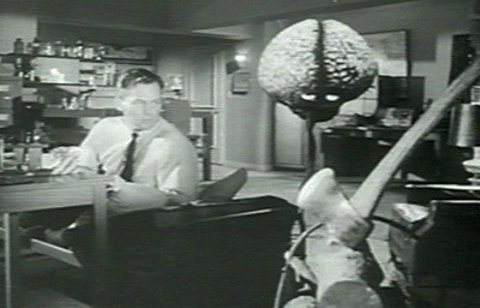
Hey Brain! Get back here.
Receptors iontropic,
Neurotransmitter release,
Epigenics of the brain,
Study shows us these.
Endorphines, oxytocin
And no-re-pin-e-phrine
Is the ink our brain writes with
Along with dopamine.
Words capture what I see and feel,
Words are telepathy
That transfers thoughts from my mind
To you, or yours to me.
Words are ink upon a page,
Or nicks in clay or stone,
Or dits and dahs in cyberspace,
Or air’s vibrating tones.
If that is all that words are
Then I will agree
That chemicals within my brain
Are all there is of me.
Thanks to NPR and Marv Minsky for inspiration. Have you ever said “My mind’s playing tricks on me”? Who are you? And where is this Mind? It’s weird living inside a brain.

November 22, 2014
The Novel “Divergent” and Writing Advice
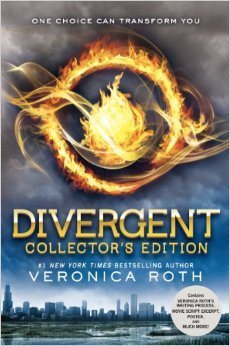 A short review follows with comments on how the book relates to standard writing advice.
A short review follows with comments on how the book relates to standard writing advice.
Divergent is one of the current crop of dystopias, perhaps inspired by Hunger Games, where teenagers fight each other and sometimes kill. Divergent offers a society inhabited by people like us in a world detached from time and place. It might be a future Chicago since there are a few references like Michigan Avenue and the Hancock Building, but the location doesn’t matter. The technology in this world seems about like ours (although fluorescent lights are called “ancient”) except with more advanced mind manipulation techniques.
In this world, citizens are separated into five factions that dislike and distrust each other. The factions are based on the virtues they venerate – Candor values honesty, Abnegation – selflessness; Dauntless – bravery; Amity – peacefulness; and Erudite – intelligence. But an individual’s personality also has an influence. At age sixteen, a virtual reality test is given to determine if the teen fits their parents’ faction and only the teen is supposed to know the test’s outcome. Then they must choose the faction they will live with the rest of their lives.
The hero of the book is a girl who changes factions and must struggle through a training and initiation period that is both mentally and physically grueling. Most of the book follows her through these trials with the friends and enemies she makes along the way. Eventually she discovers a dark plot brewing and must move beyond her own problems. Towards the end, some adults actually take positive roles.
Thousands of reviewers on Amazon love this book. A comparative few simply couldn’t accept the premise or didn’t like the characters, or felt Divergent compared poorly to Hunger Games. Some felt “there are way too many books about kids killing each other these days.” (Lisa Babcock).
The book kept me reading right along. This is clearly the first book in a series, and some interesting elements, like “factionless” loners, were introduced (I assume) to be used in the next book. The book does, however, have an ending of its own. Perhaps if you’ve ODed on teen dystopias, you should give the genre a rest. But otherwise this is a good read.
Writing Advice
I’ve been trying to learn something about writing science fiction as I read successful novels.
I found it interesting that the world of Divergent only adds one “high-tech” improvement – mind manipulation. Fists, knives, and guns form the weaponry. Everything from transportation to food seems pretty mundane. This may be a wise choice. Trying to introduce and explain multiple technologies may produce a pedantic book. Ignoring explanations may leave readers bewildered. It’s a tough call because, for me, experiencing a different world is part of the fun of science fiction and obviously the future (or an alternate universe) will be different from my world in many ways.
A writing tip I’ve seen is to grab the reader with action in the first 250 words. Divergent begins with the hero (first person narration and present tense) looking at herself in the mirror and thinking. Suspense is added shortly after as she worries about her aptitude test and we begin to learn about her world. Did it work? Even some of the book’s fans say it starts slow. The start didn’t stop me from reading, but then, personally, I don’t need a James Bond movie sort of first scene.
In Writing Fight Scenes, Rayne Hall recommends:
Build suspense with the immediate preliminaries,
Avoid prolonged stretches of blow-by-blow description,
Provide a surprise – (something happens that is outside the fighters’ control) and a climax when the character may be close to giving up or being defeated.
Depending on how realistic the story, an aftermath should take stock, feel pain, and check injuries.
Divergent follows this advice fairly well across a series of fights, though without the surprise/climax. Like most action adventures, I suspect in reality the characters would be reduced to hospitalized immobility by some of the action scenes, but we all seem to accept that in movies so why not in books.
I am closer to understanding “show don’t tell” advice. When Roth writes
“The houses on my street are all the same size and shape. They are made of gray cement, with few windows, in economical, no-nonsense rectangles”
I think she is showing me the street via description. “Show and Tell” also relates to pacing: To write “I try to smile convincingly” takes fewer words than describing her appearance. How would you even describe that face so readers would easily understand?
Some adverbs do creep in violating the advice to choose a better word rather than add an adverb. But I think even Stephen King slips an adverb in occasionally.
As for “saidisms,” Roth mostly sticks to “say” and “ask.”








November 19, 2014
Misplaced Animals – a poem by Kate Rauner
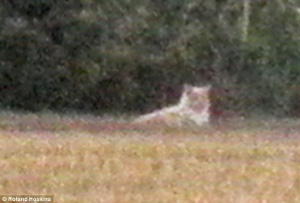
Lion or kitty-cat?
A gator crawls along the road
Near Hanover PA.
A freezing lemur found near death,
Why is he out this way?
Penguin seen in England,
An emu, I’m no liar,
Creating hazards for the drive
Outside of South Yorkshire.
A monkey loose in Dorset
To aim your cell phone at.
Louisiana panther
Is just a kitty cat.
A lion roaming Norwalk
In Californian hills,
Another stalking Essex,
Its roar gives locals thrills.
Sometimes they’re jokes or hoaxes
Or just simple mistakes,
And sometimes real animals
Left to outlandish fate.
Inspired by a series of posts at Doubtful News. I sought out stories from various locations, but many “misplaced animal” sightings come from the UK, especially of “big cats”. I read somewhere that misplaced-big-cat sightings surged in the UK after laws changed making it more difficult to keep exotic pets – perhaps owners turned their animals loose. Does anyone know if that’s true?








November 15, 2014
Plate Tectonics, Life, and Luck

Opabinia from the Burgess Shale
The Earth formed four and a half billion years ago and after a billion years of cooling the crust solidified and life appeared. Earth has been inhabited for most of its existence, but only five hundred million years ago does anything more complex than microbial mats and cyanobacteria appear in the fossil record. Then all the basic body plans that exist today evolved so quickly (in a geological sense of time) that the era is called the Cambrian Explosion. After three billion years of stasis, what changed?
Maybe the earth moved.
Repeatedly, the continents on Earth have clustered together into a single supercontinent, leaving a single superocean. Once again, about five hundred million years ago, tectonic forces broke a huge slab of continent off, creating a shallow ocean in warm equatorial latitudes while dredging up nutrients from deeper waters. The continents have merged and broken apart cyclically over geologic time, but this event was a perfect evolutionary opportunity. Life exploded in an orgy of multicellular diversity.
It’s the sort of unlikely situation that leads to thoughts that, even if life is common in the galaxy, complex life and especially intelligent life may be vanishingly rare. But plate tectonics seem to be related to planetary mass, so any rocky planet Earth-sized or larger may offer life the same chance. Just add water.
Read about the study by Ian Dalziel of the University of Texas Institute for Geophysics, published in the November issue of the journal Geology.








November 12, 2014
Dark Matter Is Everywhere or Nowhere – a poem by Kate Rauner

Color of all light in the universe added up to a shade of beige called cosmic latte
It’s everywhere.
It’s nowhere.
It can’t be seen,
But hardly rare.
Gravitational effects
In axes x, y, z;
Dark matter clarifies
Mass discrepancies.
We just don’t know
What it might be,
But it’s embraced
In the community.
It accounts for most
Of what’s not seen,
Or does not exist -
It’s entropy.
Is it gamma rays
Of dwarf galaxies?
But there are none
That we can see.
Can’t rule it out,
Can’t rule it in,
Can’t detect
With germanium.
It won’t absorb,
It won’t emit .
Hypothesize
But don’t commit.
Dark matter forms over 80% of the universe, or maybe none at all. A real puzzle. Learn more at Wikipedia or NatGeo, “a maddening refrain in the search for the invisible, omnipresent particles.”








November 8, 2014
Get Your Butt in the Seat and Write
 November is National Novel Writing Month. Have you started yours?
November is National Novel Writing Month. Have you started yours?
“National Novel Writing Month (NaNoWriMo) is a fun, seat-of-your-pants approach to creative writing. On November 1, participants begin working towards the goal of writing a 50,000-word novel by 11:59 PM on November 30. Valuing enthusiasm, determination, and a deadline, NaNoWriMo is for anyone who has ever thought fleetingly about writing a novel.” nanowrimo.org
This is a world-wide challenge, most popular in the United States and Western Europe.
I wrote the first draft of my science fiction novel Glitch inspired by NaNoWriMo and encouraged by a long-time friend. I stuck pretty close to a goal of writing 2,000 words a day. Each morning started with a few hundred pitiful words, then the dog’s morning walk. As I walked, the blocks in my brain would breach and by the time I got home, the words were ready to flow. But the huge problem with my first draft was continuity. I wrote out of sequence and purely for my own interests. It took several more drafts to beat out a coherent story. Glitch is still available. I can proudly say: it’s not terrible. Most of my (far too few) reader reviews agree with my own, biased assessment. I have a second novel, Venture, available and I’m working on a third. I’m learning and, I think, getting better. I wouldn’t call it “fun” exactly, but satisfying, interesting, addictive.
The experience led me to study advice for writers – I can’t help it, I’m and engineer and want to know how things work. I now go back and forth between outlining my story and drafting chapters. I try to keep a running list of each chapter’s content, so I have fewer problems describing – say – a character’s hair as brown in one place and blond somewhere else.
Try writing a novel, if only to find out how hard it can be. You’ll appreciate your favorite writers more. You don’t have to publish to have fun. Write just for yourself, or for your own group of friends. To publish on a social site, try Wattpad.com. If you’re brave enough or maybe foolish enough, offer your work to others to critique. Whether you believe the saying “everybody has a book in them,” or, like Christopher Hitchens, “everybody does have a book in them, but in most cases that’s where it should stay,” it’s a great experience.
Now if I can just figure out how to keep the cat off the keyboard.








November 5, 2014
Discoveries in Groceries – a poem by Kate Rauner
If you can sequence DNA
Data now abounds,
And in your Chinese take-out
New species can be found.
Among porcini mushrooms
There are many kinds,
All are choice and edible
And now that we can find
Cryptic species easily
Among those that look the same,
For a couple thousand dollars
One could bear your name.
Thanks to an article on npr.org, which includes mention of mushroom clubs. Before you collect mushrooms in the wild, make sure you know your ‘shrooms – some are deadly poisonous.








November 1, 2014
Change Your Clocks – It’s Good for Golf Courses
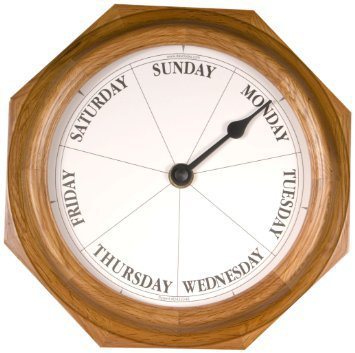 My husband could have missed his flight October 27th – the hotel changed their clocks back to Standard time a week early. November 2nd is the date most Americans switch away from Daylight Saving Time, back to Standard Time.
My husband could have missed his flight October 27th – the hotel changed their clocks back to Standard time a week early. November 2nd is the date most Americans switch away from Daylight Saving Time, back to Standard Time.
This isn’t national law – it goes state by state. “Residents of Arizona (except those living on the Navajo Nation), Hawaii, Puerto Rico, the Virgin Islands, American Samoa, Guam, and the Northern Marianas Islands won’t need to change their clocks.” Every year, legislation is introduced to stop this silly practice, but mostly goes nowhere.
Over the years I’ve been told we do this because children are safer at morning bus stops, or to save energy. But NatGeo says the real reason is money.
Lobbyists regularly fight ending the time change, and these aren’t lobbyists for pediatricians. Their clients range from convenience stores to tourism groups, Golf courses want more hours of daylight after work: “The Golf Alliance for Utah estimated that dropping DST would reduce play by 6 percent… and cost Utah’s economy $24 million each year.”
So stay on Daylight Savings Time year round. I’d just like to see the changes stop. No matter where I lived, around the equinoxes I seemed to drive into the sun going to work or coming home – and just when the sun had moved far enough to stop blinding me, the time change would come and put it right back in my eyes. Surely that’s a good enough reason to abolish the time change.












